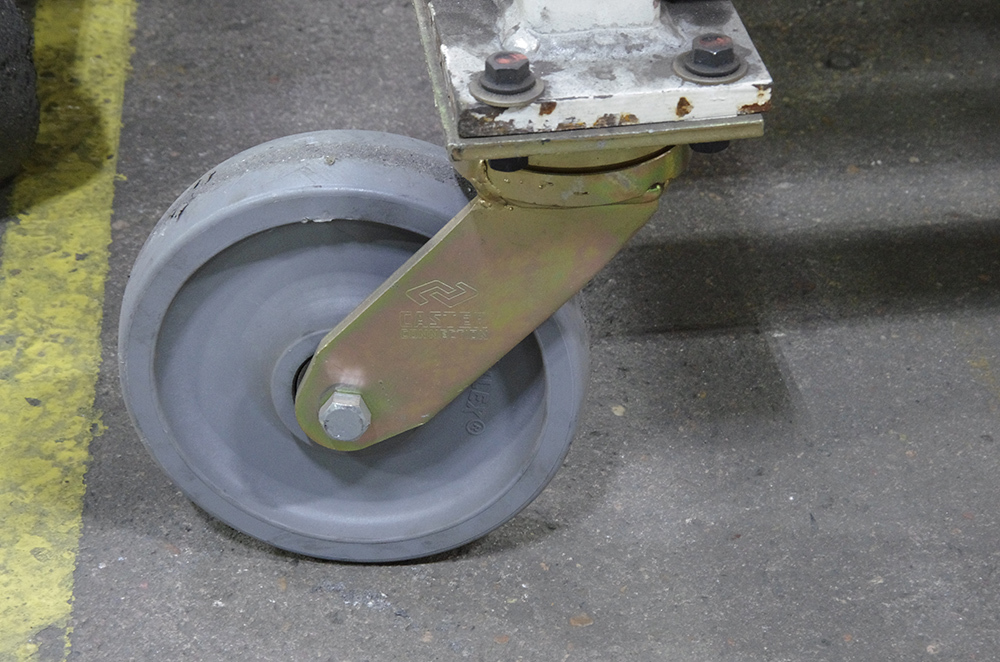Casters for Liquid-Cooled Load Banks: What You Need to Know

As power infrastructure evolves, liquid-cooled load banks are becoming essential for testing electrical systems in high-demand environments. Data centers, backup generators, renewable energy installations, and grid-scale battery systems increasingly rely on these units for accurate, sustained load testing.

The cooling systems and electrical performance of these load banks get most of the attention. But when failure happens in the field, it’s often due to a component that gets overlooked: the caster.
If you're renting, operating, or manufacturing liquid-cooled load banks, it's important to understand the risks coolant exposure presents—and how the wrong caster can compromise safety, uptime, and equipment integrity.
What Sets Liquid-Cooled Load Banks Apart?

Traditional load banks use air cooling systems to dissipate heat generated during electrical testing. Liquid-cooled load banks, in contrast, use water or a water-glycol mixture to manage thermal output. This makes them more effective for sustained testing and high-load applications.
These units are commonly deployed in:
-
Battery energy storage validation
-
Generator and backup system commissioning
-
Renewable energy infrastructure testing
-
High-throughput industrial power environments
While liquid-cooled systems offer clear performance advantages, they also introduce new risks—especially for components like casters that are rarely designed with coolant resistance in mind.
Why Coolant Exposure Puts Casters At Risk

Liquid cooling improves system performance, but it creates a harsh environment for under-spec casters. Leaks, spills, and condensation can quickly lead to failure if materials are not properly selected.
Common failure points include:
-
Wheel material degradation
Polyurethane and polyolefin wheels can absorb moisture, swell, and crack. Some formulations disintegrate completely after repeated coolant exposure. -
Rig and hardware corrosion
Standard steel rigs and exposed bearings are prone to rust, weakening the caster’s structural integrity over time. -
Bearing failure
Coolant can wash away grease, leading to squeaking, resistance, or total bearing lockup. -
Loss of structural strength
Chemically degraded wheels may flatten or collapse under the weight of a fully loaded unit.
These failures increase operational costs and can pose real safety risks for personnel and equipment.
Nylon-Based Casters: The Right Material for Liquid-Cooled Systems
When coolant exposure is expected, nylon is the most dependable wheel material for load bank mobility. Two options stand out:
Cast Nylon
- Dense, non-porous structure
-
Naturally resistant to water, coolant, and common industrial chemicals
-
Performs well indoors and outdoors

Glass-Filled Nylon
- Reinforced with embedded fibers for added rigidity
-
Maintains shape and load capacity under high pressure
-
Ideal for heavy-duty and continuous-use applications

Both materials resist coolant absorption, prevent wheel swelling, and hold up under repeated stress, making them a reliable choice for modern load bank operations.
How to Spec Casters for Liquid-Cooled Load Banks

The wheel material is only one part of the equation. A complete caster spec should reflect real-world demands, including load, terrain, moisture exposure, and maintenance limitations.
Use the following as a reference:
| Specification | Why It Matters |
|---|---|
| Wheel Diameter (4"–8") | Larger wheels improve ground clearance and handle uneven flooring more effectively. |
| Load Rating | Each caster must be rated to support its portion of the total weight, including dynamic movement and uneven distribution. |
| Swivel and Rigid Mix | A balanced combination improves control during transport and positioning. |
| Brake Options | Total-lock or side brakes are critical for safety on sloped or mobile platforms. |
| Rig Material | Zinc-plated or stainless steel prevents corrosion in damp or chemical-rich environments. |
| Bearing Type | Sealed or maintenance-free bearings keep coolant and debris out and extend caster life. |
Not sure how to translate these into a final product selection? Our Caster Nerds can help you evaluate conditions and make recommendations based on actual field demands.
Don't Wait Until You Have a Breakdown
A failed caster on a liquid-cooled load bank can stop a project in its tracks. It can also create safety hazards and trigger unexpected maintenance that cuts into operational margins.
That’s why we recommend cast nylon or glass-filled nylon wheels paired with sealed rigs and corrosion-resistant components for any environment involving coolant exposure.
At Caster Connection, we work directly with load bank OEMs and rental fleets to engineer caster systems that last longer, roll smoother, and hold up where others fail.
Ready to get the right spec?
If you’re building or managing liquid-cooled load banks, now is the time to get your caster selection right. Our team will help you find the best material, rig, and configuration for your specific environment and use case.
